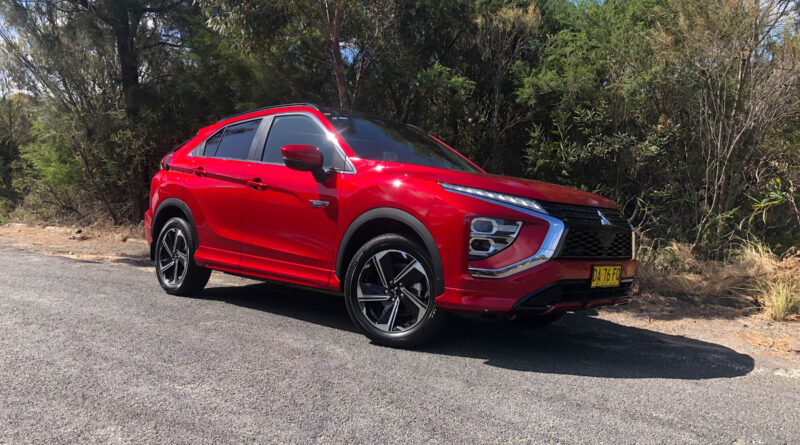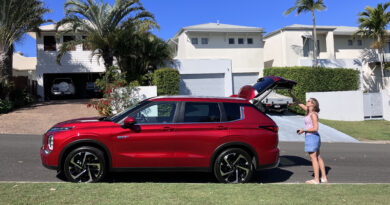Mitsubishi Eclipse Cross Plug-in Hybrid EV review
Mitsubishi has long led the way on sales of plug-in hybrid electric vehicles – or PHEVs – in Australia.
Its Outlander PHEV attracted some interest in a small but growing niche, especially from fleets and governments.
Now Mitsubishi wants to capitalise on the momentum with the Eclipse Cross Plug-in Hybrid EV.
While there’s lots shared between Outlander and slightly smaller Eclipse Cross – including the basic PHEV drivetrain – the Eclipse Cross PHEV also ushers in a new era for Mitsubishi’s plug-ins.
That’s because Mitsubishi has determined the PHEV acronym has the potential to confuse and that Plug-in Hybrid Electric Vehicle is a better way to get the point across.
So, meet the Eclipse Cross Plug-in Hybrid EV (yes, we know, someone forgot to tell the people sticking the badge on the rear that PHEV is no longer part of the sales pitch…).
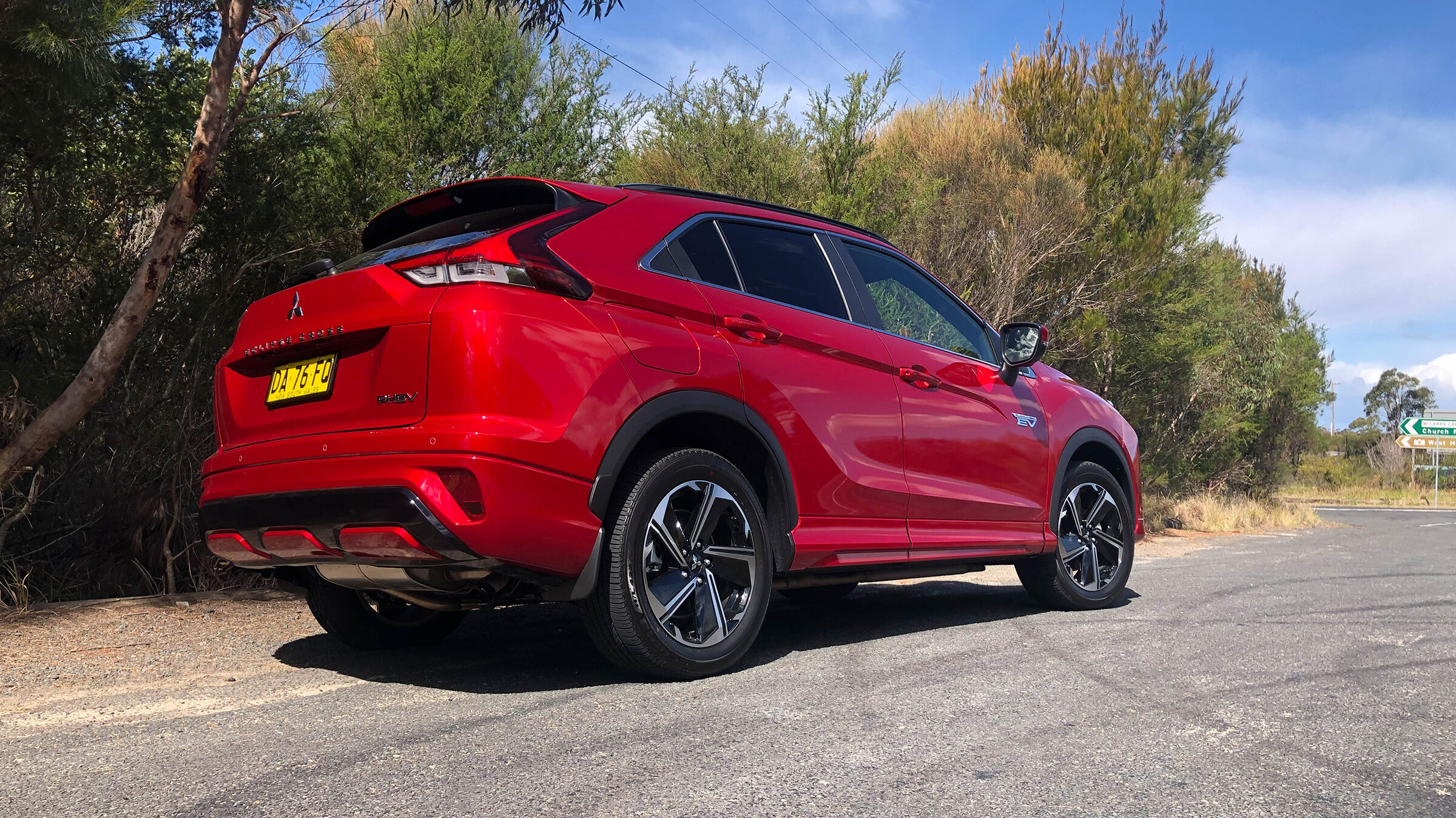
Slightly smaller than the Outlander, the Eclipse Cross is about the same price. Not that it’s a major issue because the Outlander PHEV is now a discontinued model.
A new Outlander PHEV is in the wings and, like the rest of the Outlander lineup it’s expected to increase in price.
That leaves some clear air for the Eclipse Cross PHEV, which has also had a styling update as part of a facelift: much of that facelifted revolved around the nose, which was lengthened to fit in the additional components for the hybrid system.
Value
The Eclipse Cross Plug-in Hybrid EV is available in three trim levels, all of which share the same drivetrain.
There’s the ES, Aspire and Exceed, priced at $46,490, $49,990 and $53,990 respectively, exclusive of on-road costs.
All come with 18-inch alloy wheels, an 8.0-inch touchscreen with Apple CarPlay and Android Auto.
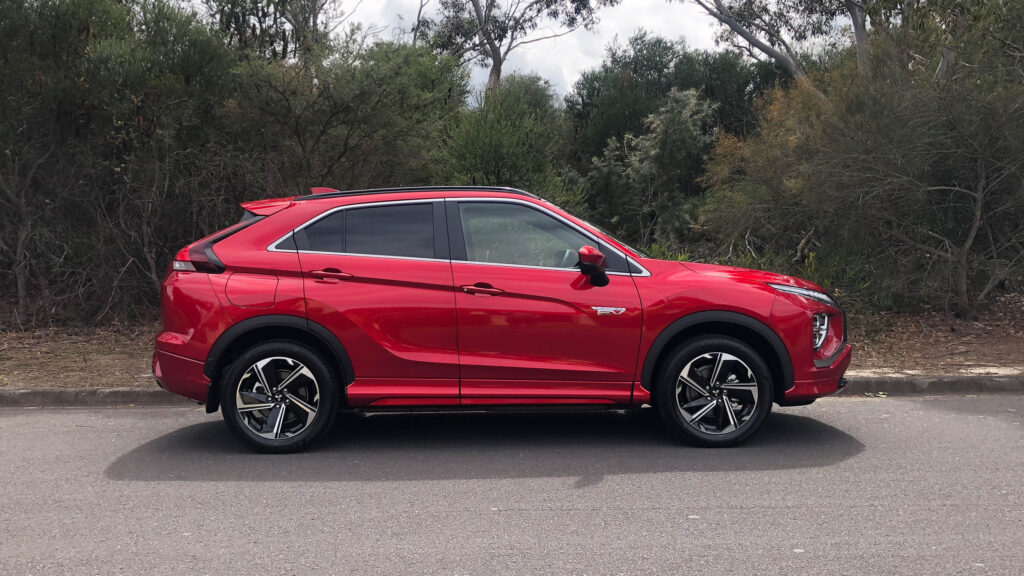
The Aspire also gets some suede and fake leather trim, powered driver’s seat, fog lights, auto up/down functionality for the electric windows, adaptive cruise control, auto headlights and rain-sensing wipers. Safety upgrades include blind spot warning and rear cross traffic alert. There’s also heated seats, in part because direct heating is a more efficient way to keep humans happy, in turn reducing the drain on the battery.
The top-shelf Aspire picks up a double sunroof, real leather, head-up display, a heated steering wheel, heated rear seats, built in sat-nav and LED headlights.
Whereas petrol-only Eclipse Crosses get a space saver spare tyre, the PHEVs do without, instead getting a repair kit.
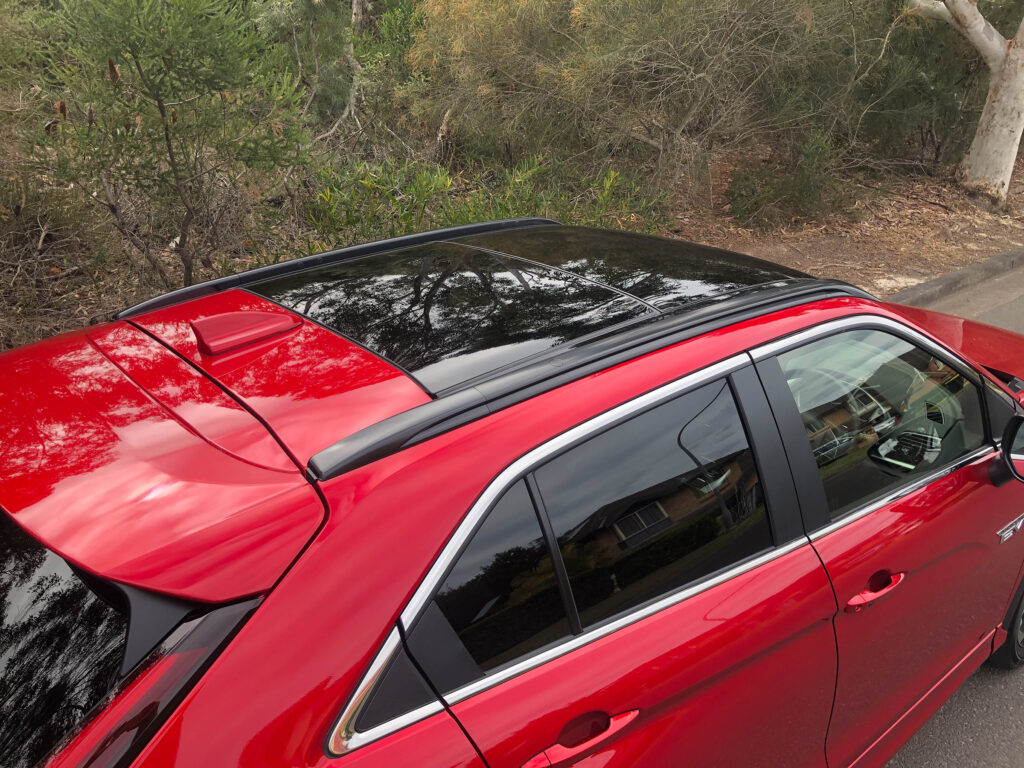
The Eclipse Cross gets a five-year 100,000 kilometre warranty, albeit one that can be extended to 10 years/150,000km by getting the car serviced every time (and on time) at a Mitsubishi dealer (there’s a good chance you can get cheaper services done elsewhere). Services are required every 12 months or 15,000km and range in price from $299 to $799 per service; the total servicing cost at a Mitsubishi dealer for the full 10 years and 150,000km is $4790.
Inside
There’s nothing flashy or showy about the layout or finishes in the Eclipse Cross.
Instead, it’s the sort of mediocre plastics commensurate with what’s dished up in a mainstream SUV.

Ours was the Exceed, which comes with the most opulent finishes, including a carbon fibre-look finish.
Some silver plastic finishes and leather help lift the ambience, but there’s not the classier flavour of a Volkswagen or Mazda.
The basics done decently, but little more.
Front seats are comfortable, though and major controls fall easily to hand.
The central touchscreen has loads of menus and sub-menus that take familiarisation and there’s loads more info than most will probably need or want, right down to data about energy flow between the petrol engine and electric motors and fuel/electricity usage.
There’s no digital speed readout on the instrument cluster of our Exceed, the speed instead projected on the pop-up head-up display.
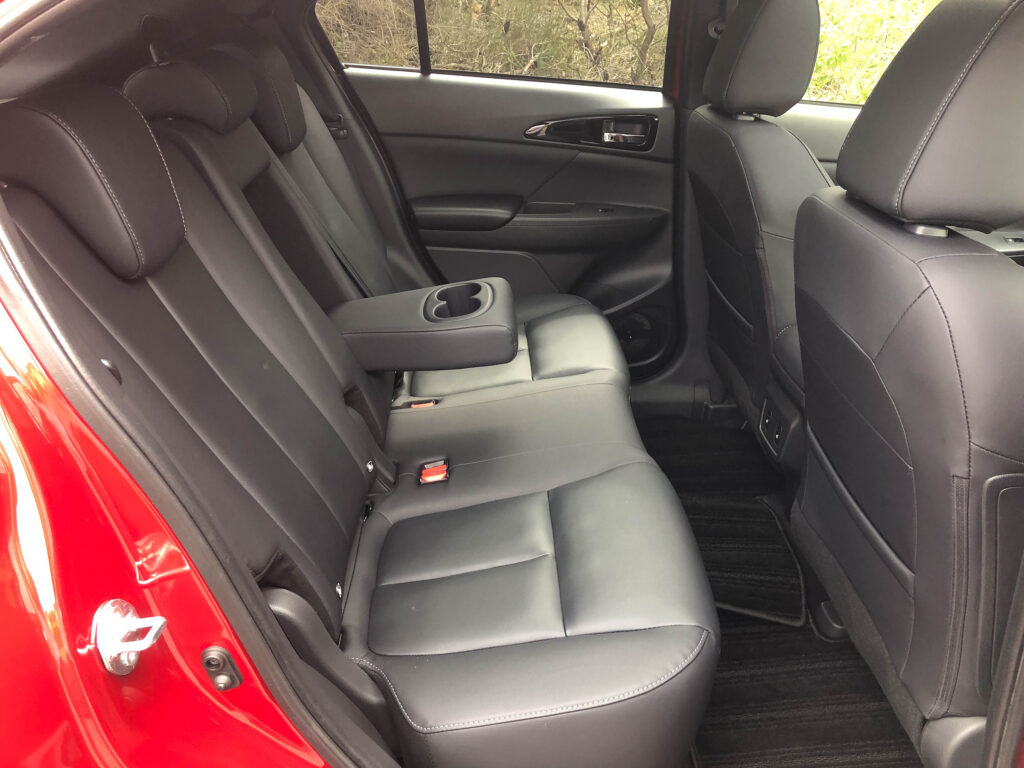
Those in the rear miss out on separate ventilation and the back seats aren’t as commodious as a mid-sized SUV, but they’re fine for all but the lankiest among us, at which point head room gets cramped. Great for a couple of kids, not as convincing for a car full of adults.
The boot floor is relatively high as a result of the batteries way beneath and the charging cables stored between them.
At 359 litres luggage capacity is down from the 405L in other Eclipse Crosses. A 60/40 split-fold allows for bulky items.
Performance and efficiency
The Eclipse Cross PHEV – sorry, Plug in Hybrid EV – has the same drivetrain as the recently-departed Outlander PHEV.
That means a 2.4-litre four-cylinder engine making a thoroughly modest 94kW and 199Nm (like the engines in Toyota hybrids it’s been tuned for efficiency and being part of a hybrid system).
There are also two electric motors, one for the front wheels and one for the rear. That means it has all-wheel drive, which is a rarity for PHEVs – and something that gives the Eclipse Cross an advantage over its most obvious rival, the upcoming Ford Escape PHEV.
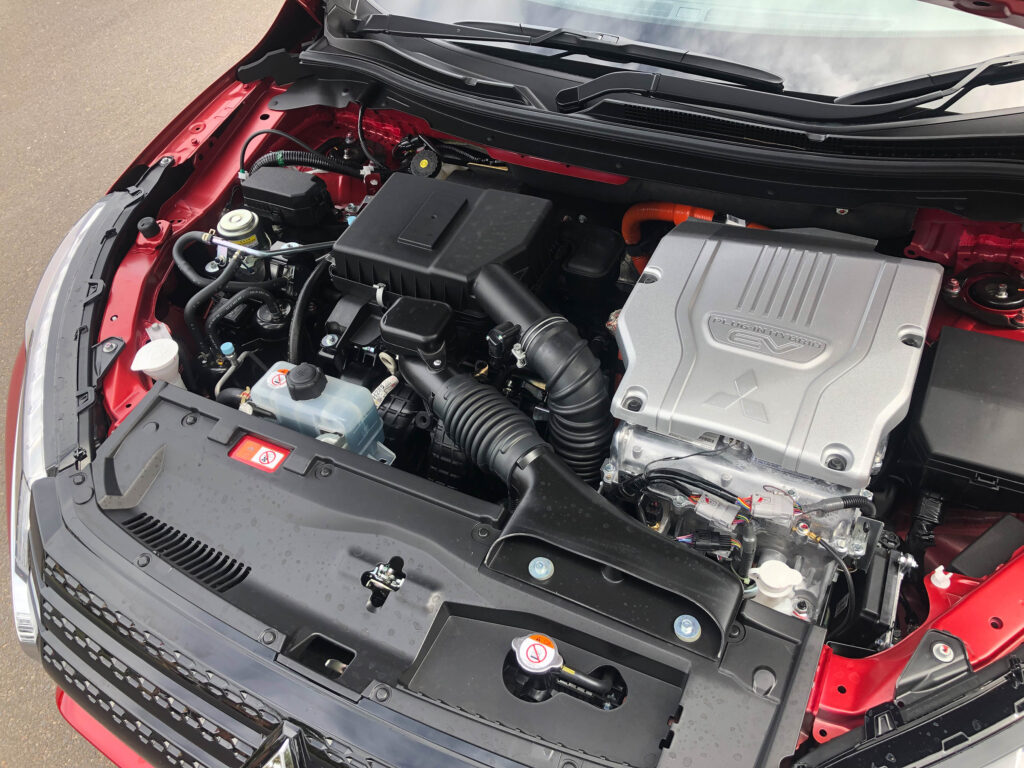
The front motor makes 60kW and 137Nm and the rear motor 70kW/195Nm.
When used in the Outlander PHEV Mitsubishi has previously quoted combined outputs of 157kW and 332Nm. While Mitsubishi Australia says “the output of this drivetrain is no less than the Outlander” it also says it no longer quotes combined outputs because of the variables involved (the petrol engine and electric motors don’t produce their peaks at the same time, and outputs can vary depending on battery charge and other factors).
Running in EV mode acceleration is leisurely, albeit with a thoroughly usable meatiness when you first press the throttle. There’s a maximum of 130kW and 332Nm to play with. While they’re healthy numbers, the Eclipse Cross PHEV weighs about 1.9 tonnes, so there’s a decent chunk of metal to move.
It’ll keep up with suburban traffic fine, but you’re unlikely to be the one blasting ahead into a gap or zipping into traffic, at which point you risk wakening the petrol engine.
That’s part of the trick with the PHEV. There’s an added incentive to stay in EV mode, which in turn means driving modestly.
Electricity consumption is claimed at 16.8kWh per 100km, although we found it typically used more than that, sometimes over 20kWh/100km. Still, with an electricity price of 25c/kWh that’s still only $5 per 100km.
Like all PHEVs, the Eclipse Cross can’t run solely on electricity for eternity. The maximum the car’s computer will allow is 89 days, at which point it forces an engine start in part to protect the fuel injectors and run some fuel through the system.
When running in hybrid mode there are still fuel saving benefits because you’re regenerating electricity when braking.
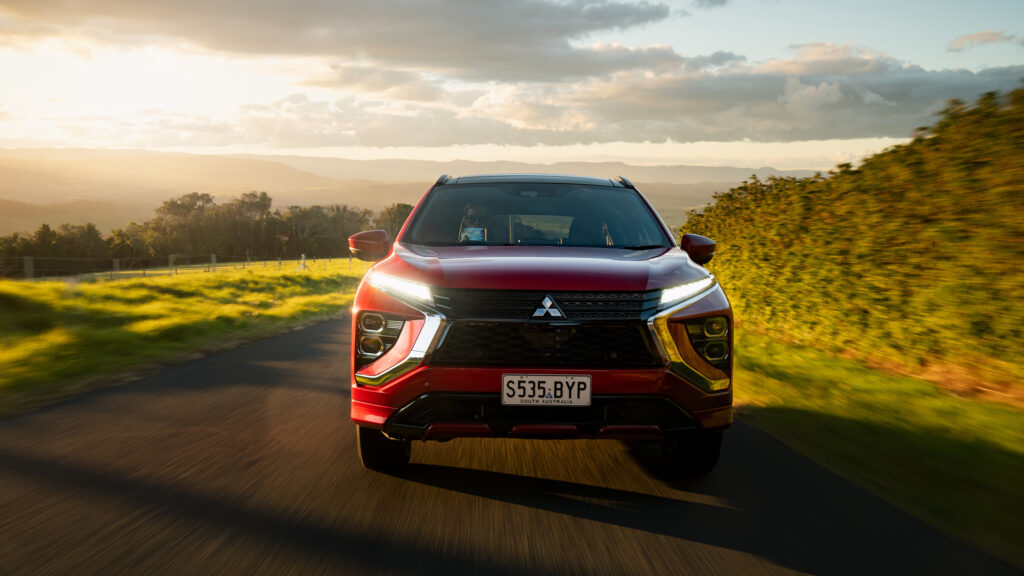
But it’s not as pronounced as with a straight hybrid, our brief drive returning something around 7-8 litres per 100km. That’s well up on the 1.9L/100km claim that is a largely unachievable government test that is not representative of most people’s driving.
It’s a reminder that a PHEV does its best work in EV mode with the engine as a backup.
As a hybrid you have more to play with in terms of performance (it’s something you’ll also unleash if you press the throttle to the floor when in EV mode). But there’s some laziness in the power delivery, especially if you’re on and off the accelerator, like when on a country road.
That said, the transition between petrol and electric is smooth, with the electric motors providing nice low-rev muscle as the engine builds tempo.
There’s no tachometer, with a power meter instead letting you know if it’s petrol or electricity doing the pulling.
Charging
The Eclipse Cross Plug-in Hybrid EV has a 13.8kWh lithium-ion battery.
It’s a sizeable door covering the charge ports on the driver’s side.
That’s because – like the Nissan Leaf – there are two choices. There’s a Type 2 plug for AC charging and a Chademo plug for faster DC charging.
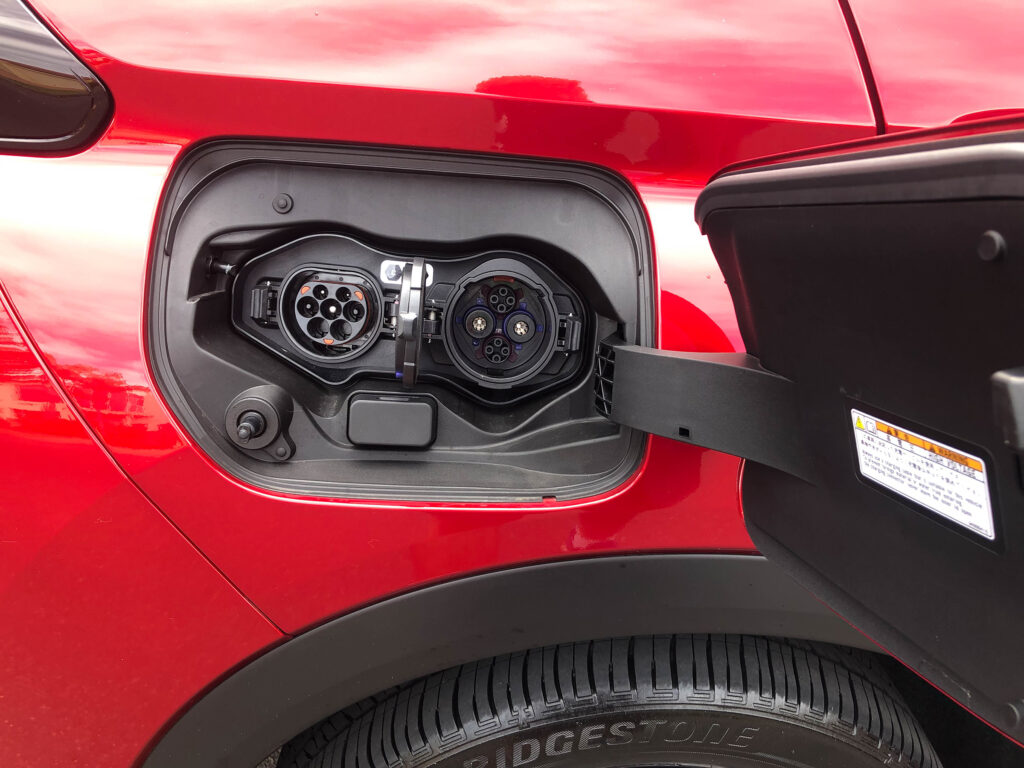
The AC plug can accept up to 3.7kW from a wallbox charger, so it would take about four hours for a full charge. If you’re using a home powerpoint a full charge is more like six hours.
It’ll take 22kW from a DC fast charger, leading to an 80 percent charge in as little as 25 minutes; a full DC charge would be more like 45 minutes or longer.
The Eclipse Cross also has vehicle-to-grid (V2G) charging capability. It’s technology still awaiting government approval but, when it happens it’ll allow the car to power a house or send electricity back into the grid.

With a 13.8kWh battery pack the usefulness is limited, but it’s a way to potential reduce power bills or even make a bit of money.
Ride and handling
It’s basic motoring in the Eclipse Cross. The suspension is towards the softer side, which works fine around town but lacks the finer points of control at country road speeds and once bumps enter the equation.
The PHEV gets clumsy over multiple big bumps and it’s regularly leaning on its nose, the front tyres eventually protesting by running wide of your intended arc.
Ours had Bridgestone Ecopia tyres, which are designed to have low rolling resistance but weren’t overloaded with grip.
The Eclipse Cross also has some vagueness to its steering, lacking the surety and crispness of the best in the SUV class.
It’s a car more comfortable at moderate pace rather than one likely to thrill or entice.
It’s relatively quiet and refined, though, especially in EV mode.
Talking point
The Eclipse Cross Plug-in Hybrid EV can be used to power a house. Or, at least, it will be able to once the federal government approves vehicle-to-grid (V2G) infrastructure.
The 13.8kWh battery means you may only get one night of electricity to an average house. But if you’re good at planning ahead of need a backup (such as during a backup) it’s an extra talent of the hybrid system.
And if you’re really desperate the car’s engine can be used to generate electricity to keep powering your house longer.
Safety
The Eclipse Cross gets a five-star ANCAP rating from a test conducted in 2017. The ANCAP testing regime has got tougher since then.
And it’s not exactly overloaded with safety gear, especially of the active (crash avoidance) kind.
In base ES trim, for example, it comes with autonomous emergency braking (AEB) and lane departure warning.
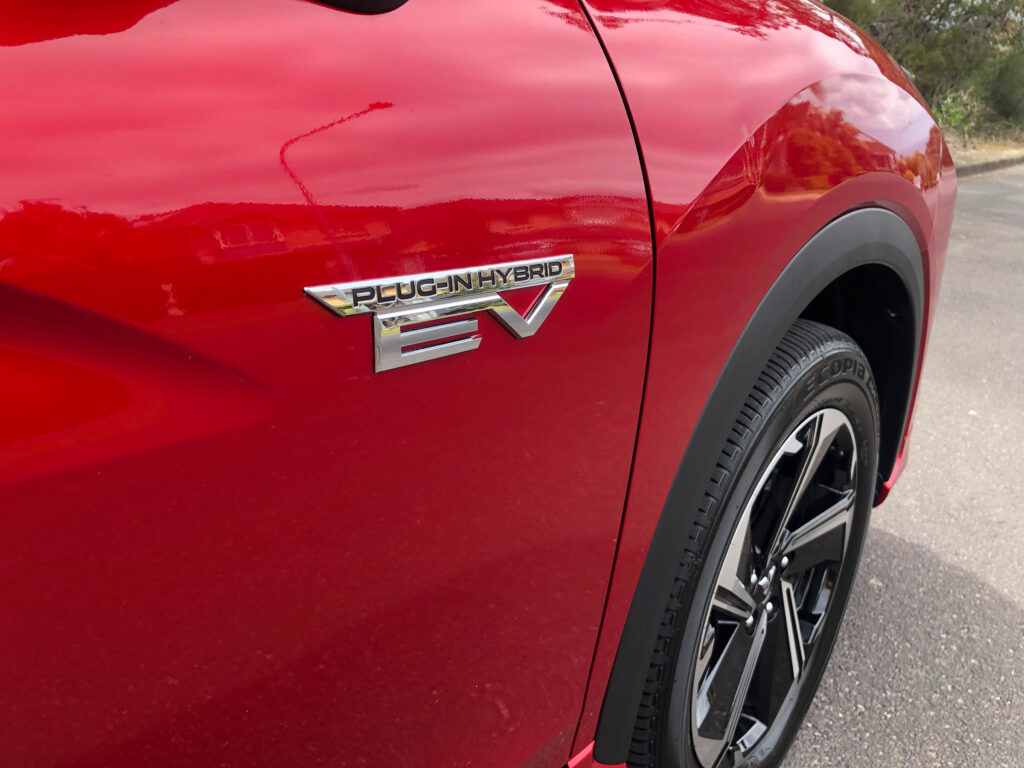
But whereas many compact and mid-sized SUVs (Mazda CX-30, Toyota RAV4 and so-on) fit blind spot monitoring and rear cross traffic alert as standard, for the Eclipse Cross you have to spend more (on what is already a premium priced SUV) on the Aspire or Exceed.
All models come with seven airbags, including dual front, front side, side curtain and a driver’s knee airbag.
Verdict
Mitsubishi markets the Eclipse Cross PHEV as a “no compromise” and “best of both” SUV, which isn’t entirely true.
There’s some compromise on boot space and there’s a compromise on how it drives with the added weight of the hybrid system.
Like all PHEVs, it’s a car for a buyer who can mostly drive it on electricity (less than 50km per day) but absolutely needs the petrol backup occasionally.
For that you’ll be stepping into a basic but honest PHEV that doesn’t rewrite any rules but delivers on value and SUV expectations. The AWD system is a plus.
Mitsubishi Eclipse Cross PHEV specifications
Price: $46,490 plus on-road costs
Basics: PHEV, 5 seats, 5 doors, SUV, AWD
EV range: 55km (NEDC)
Battery capacity: 13.8kWh
Battery warranty: 8 years/160,000km
Energy consumption: 16.8kWh/100km
Fuel consumption: 1.9L/100km
Engine: 2.4-litre 4-cylinder, 94kW/199Nm
Motors: 1 front 60kW/137Nm and 1 rear 70kW/195Nm
Combined power/torque: Not officially quoted, but approximately 157kW/332Nm
AC charging: 3.7kW, Type 2 plug
DC charging: 22kW, Chademo plug
0-100km/h: NA

